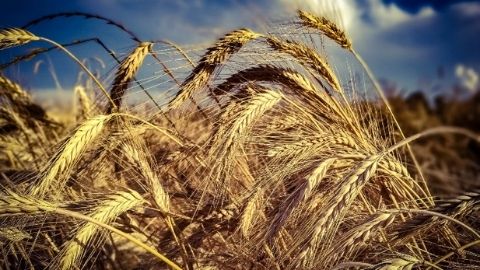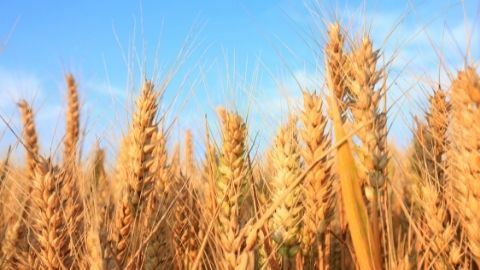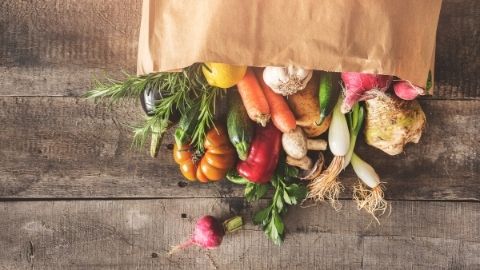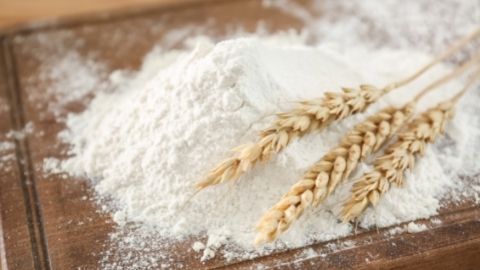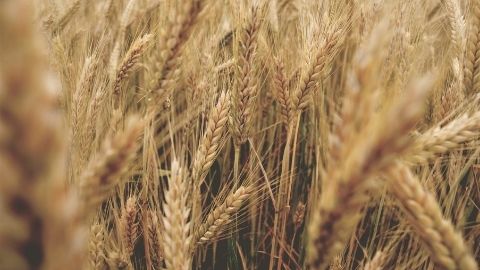Wheat Miller and Distributor Organic Wheat Quality and Quantity Requirements
Introduction
Organic wheat acreage represented 1.2% of all wheat acreage in the U.S. in 2019 (U.S. Department of Agriculture [USDA] National Agricultural Statistics Service [NASS], 2020a; USDA NASS, 2020b). In terms of acreage, the Intermountain West states of Montana, Wyoming, Utah, and Colorado have consistently been among the top five organic wheat-producing states since 2010, accounting jointly for 54% of all U.S. organic wheat acreage in 2019 (USDA NASS, 2020a). However, the organic wheat market is constrained by a lack of supply, as organic wheat acreage increased by only 20% between 2008 and 2016 (Koory, 2018; McNeil, 2019). Low supplies are reflected in the premium pricing for organic wheat in the market. In 2019, organic food-grade wheat averaged $12.20/bushel, significantly higher than conventionally grown wheat selling at $5.35/bushel (USDA Agricultural Marketing Service, 2019). Hence, the market for organic wheat is promising if growers can maintain profitability. Price variability and issues with soil quality and drought have limited the number of growers adopting organic wheat production and created incentives for organic growers to exit the market.
This fact sheet summarizes the findings of a survey conducted with wheat buyers (millers and distributors) to assess their organic wheat quality and sourcing needs. We examine the importance of various quality measures in miller and distributor decisions to purchase organic wheat and their perceptions of organic and conventional wheat quality. We also discuss the issues wheat buyers face when purchasing organic wheat and what prevents them from buying organic wheat if not already doing so. Given the significant contribution of the Intermountain West’s production to domestic organic wheat supply, growers and breeders must understand the needs of organic wheat millers and distributors in order to access market price premiums.
Wheat Buyer Survey Overview
The wheat buyer survey data were collected from December 2020 and January 2021 using an online platform. In total, 25 wheat millers and distributors responded to the survey; the majority (56%) are wheat millers. All are located in U.S. western states, including Montana (25%), Washington (25%), Utah (21%), Oregon (17%), and California (13%), with some operating in multiple states.
Among the respondents, 16 currently handle organic wheat and nine have never handled organic wheat. More than half of wheat buyers sell wheat or wheat flour to wholesalers or distributors (56%). For those handling organic wheat, other markets they use include traditional bakeries (63%), artisan bakeries (56%), and food processors (56%). Those handling organic wheat tend to be larger establishments (46% report more than 60 employees) than those only handling conventional wheat (0% report more than 60 employees). Most wheat buyers have been involved in wheat sales/processing for more than 20 years, with monthly gross sales from all operations above $5 million. On average, nonorganic wheat sales and organic wheat sales represent 70% and 24% of all sales, respectively, among those who handle organic wheat. Wheat sales represent 86% of all sales among buyers who only handle conventional wheat.
Table 1 provides wheat purchasing and use details for wheat buyers who handle organic wheat. Buyers indicated that they handle the following organic wheat varieties: hard red winter (88%), soft white (75%), hard red spring (69%), and hard white (63%). Overall, organic hard red winter and hard red spring classes are handled the most (38%). The majority of the wheat buyers source organic wheat directly from growers (94%) and utilize up to 20 suppliers (69%). Among other types of contracts, buyers use forward contracts with growers most frequently (60%).
Table 1
Organic Wheat Business Specifics (N = 16)
| Wheat buyer characteristic | Category | N | Percentage |
|---|---|---|---|
| Organic wheat classes handleda | Hard red winter | 14 | 88% |
| Hard red spring | 11 | 69% | |
| Soft red winter | 3 | 19% | |
| Soft white | 12 | 75% | |
| Hard white | 10 | 63% | |
| Durum | 4 | 25% | |
| Organic wheat class handled most | Hard red winter | 6 | 38% |
| Hard red spring | 6 | 38% | |
| Soft red winter | 0 | 0% | |
| Soft white | 2 | 13% | |
| Hard white | 1 | 6% | |
| Durum | 0 | 0% | |
| All/many | 1 | 6% | |
| Organic wheat sourcea | Wheat growers | 15 | 94% |
| Grain elevators | 8 | 50% | |
| Distributors or brokers – U.S. | 7 | 44% | |
| Distributors or brokers – imported | 3 | 19% | |
| Own fields/farm | 1 | 6% | |
| Number of regular organic wheat suppliers | None (own fields/farm) | 1 | 6% |
| 1–20 suppliers | 11 | 69% | |
| 21–50 | 0 | 0% | |
| 51–100 | 2 | 13% | |
| 101–200 | 2 | 13% | |
| Organic wheat purchase transactions useda | Forward contracts with growers | 9 | 60% |
| Other contracts with growers | 7 | 47% | |
| Contracts with suppliers other than growers | 8 | 53% | |
| Spot purchases | 8 | 53% |
aRespondents could select multiple options, so percentages do not add up to 100%.
 Importance of Organic Wheat Quality
Importance of Organic Wheat Quality
We asked wheat buyers that handle organic wheat to rank the importance of various factors when making organic wheat purchase decisions on a scale of 1 = “not at all important” to 5 = “extremely important.” We calculated the average ranking for each factor and ordered them from most important (highest average ranking) to least important (lowest average ranking). Results in Table 2 show that wheat quality aspects and consistent quality between shipments are the two most important factors, followed by price. Feedback from customers, as well as interaction with suppliers, are also important. Wheat origin and services provided by suppliers are least important.
Table 2
Importance of Factors When Purchasing Organic Wheat
| Factor | Mean |
|---|---|
| Wheat quality aspects | 4.07 |
| Consistent quality between shipments | 3.93 |
| Price | 3.86 |
| Customer feedback/requirements | 3.85 |
| Interaction/relationship with the supplier/grower | 3.77 |
| On-time delivery | 3.54 |
| Baking properties | 3.38 |
| Attributes of the final baked product | 3.38 |
| Quality aspects of resulting flour | 3.29 |
| Quality aspects of resulting dough | 3.23 |
| Wheat origin (region) | 3.00 |
| Services provided by supplier (e.g., delivery, storage) | 2.86 |
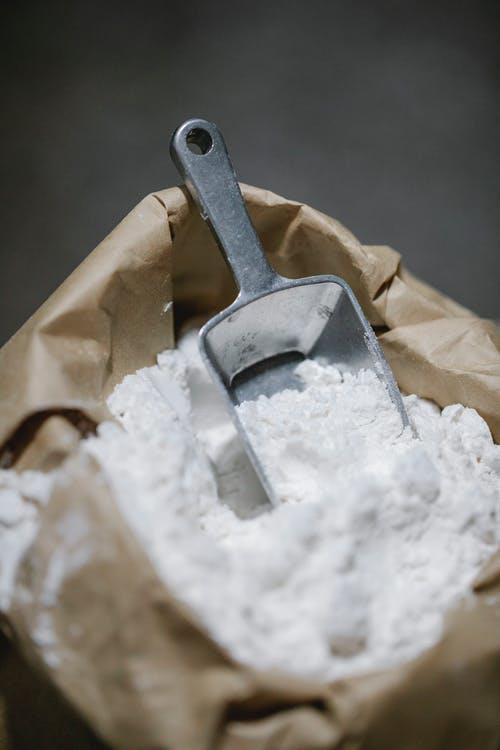 Perceptions of Organic Wheat Quality
Perceptions of Organic Wheat Quality
Next, we asked wheat buyers to rate the overall quality of organic and conventional wheat on a scale from 1 = “very low quality” to 5 = “very high quality.” The average ranking of organic wheat quality (3.50) was lower than that of conventional wheat (4.44), and the difference is statistically significant. Half of the wheat buyers consider organic wheat of high or very high quality, while 88% felt that conventional wheat is high quality.
We also asked wheat buyers which characteristics they view as important indicators of organic wheat quality, and for these characteristics, whether they perceive organic wheat to be inferior to conventional wheat. Table 3 shows that moisture content, test weight, and protein content and quality are important to two-thirds or more of the wheat buyers, and up to 42% perceive organic wheat to be inferior for those characteristics. Two-thirds of the wheat buyers consider dockage (dirty grain) and wheat defects to be important. The majority perceive organic wheat as inferior for these two characteristics, suggesting that there is room for improvement. However, 57% of the wheat buyers somewhat agree or strongly agree that there are notable differences in organic wheat quality by supplier/grower and origin (region).
Table 3
Important Indicators of Organic Wheat Quality
| Quality characteristic | Importanta | Organic inferiorb |
|---|---|---|
| Moisture content | 13 (81%) | 2 (15%) |
| Test weight/1000-kernel weight | 12 (75%) | 5 (42%) |
| Protein content | 12 (75%) | 4 (33%) |
| Protein quality | 11 (69%) | 4 (36%) |
| Dockage | 10 (63%) | 8 (80%) |
| Wheat defects | 10 (63%) | 6 (60%) |
| Contamination with other classes | 8 (50%) | 2 (25%) |
| Farinograph test | 7 (44%) | 2 (29%) |
| Single kernel characterization | 3 (19%) | 1 (33%) |
| Other factorsc | 6 (38%) or less | 0 (0%) |
a Percentages represent the share of those who viewed the characteristic as important among those who handle organic wheat currently.
b Percentages represent the share of those who indicated that organic wheat is inferior to conventional among those who viewed the characteristic as important.
c Including flour falling number, wet gluten test, flour color, ash/mineral content, microbial contamination, mixograph test, alveograph test, extensigraph test, amylograph test.
Hurdles Impacting Organic Wheat Use
We also examined wheat buyer hurdles to securing their desired quality or quantity of organic wheat and issues preventing those who have not dealt with organic wheat from handling it. We asked those who currently handle organic wheat whether they perceive certain issues to be hurdles on a scale from 1 = “not a hurdle” to 3 = “definitely a hurdle.” Averages reported in Table 4 show that not enough growers are willing to adopt organic wheat and the cost/price of organic wheat are perceived as the biggest hurdles, with 80% and 70% of wheat buyers viewing them as hurdles.
Table 4
Hurdles to Securing Desired Quality or Quantity of Organic Wheat
| Hurdle | Mean | Not a hurdle | Somewhat a hurdle | Definitely a hurdle |
|---|---|---|---|---|
| Not enough growers willing to grow organic wheat | 1.90 | 20% | 70% | 10% |
| Cost/price of organic wheat | 1.90 | 30% | 50% | 20% |
| Suppliers do not understand our quality requirements | 1.60 | 50% | 40% | 10% |
| Suppliers are unable to verify some of the quality requirements | 1.60 | 50% | 40% | 10% |
| Not enough interaction with wheat growers and breeders | 1.50 | 50% | 50% | 0% |
| Difficulty finding organic wheat suppliers | 1.50 | 60% | 30% | 10% |
| Complexity of handling and transporting organic wheat | 1.40 | 60% | 40% | 0% |
| Contamination of organic wheat during handling and transportation | 1.10 | 90% | 10% | 0% |
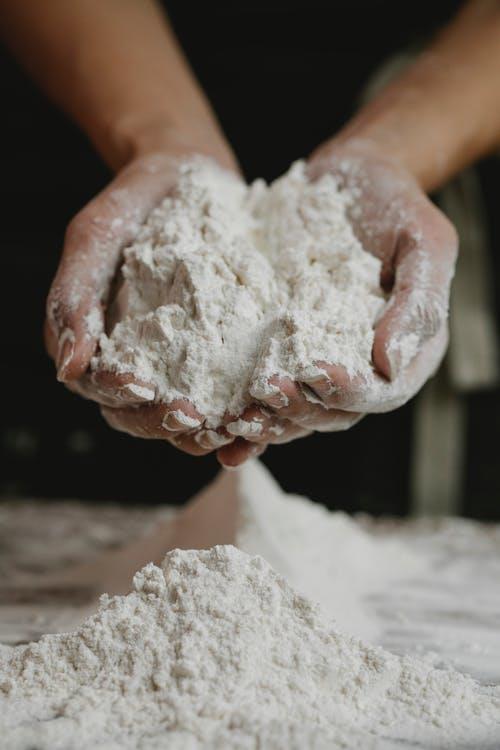 However, it appears that the issue is not the lack of organic wheat supply but rather the organic wheat quality. Only 14% of wheat buyers agree that they need more organic wheat than their suppliers can provide, but 43% say they need higher quality organic wheat than their suppliers currently provide. Since the price of organic wheat was noted as a major hurdle, it could be that high-quality organic wheat is not cost-effective. Also, 36% of the wheat buyers agree that suppliers sometimes provide lower quality organic wheat than agreed upon. On the other hand, wheat quality issues likely do not affect the milling process (only 8% feel they have to adjust milling processes for organic wheat), and 64% agree that millers can enhance the quality of the resulting organic wheat flour. In fact, only 27% somewhat disagree or strongly disagree that organic wheat flour quality is similar to conventional wheat flour.
However, it appears that the issue is not the lack of organic wheat supply but rather the organic wheat quality. Only 14% of wheat buyers agree that they need more organic wheat than their suppliers can provide, but 43% say they need higher quality organic wheat than their suppliers currently provide. Since the price of organic wheat was noted as a major hurdle, it could be that high-quality organic wheat is not cost-effective. Also, 36% of the wheat buyers agree that suppliers sometimes provide lower quality organic wheat than agreed upon. On the other hand, wheat quality issues likely do not affect the milling process (only 8% feel they have to adjust milling processes for organic wheat), and 64% agree that millers can enhance the quality of the resulting organic wheat flour. In fact, only 27% somewhat disagree or strongly disagree that organic wheat flour quality is similar to conventional wheat flour.
Fifty-five percent of buyers who have never handled organic wheat are concerned about demand for organic wheat or wheat flour, while only 46% of those who handle organic wheat are concerned about organic wheat demand. Two out of the nine wheat buyers who do not handle organic are also concerned about organic wheat quality, issues related to segregation of organic and conventional wheat, and organic wheat supply. One was concerned about the price, compliance with USDA standards, and organic wheat flour quality.
Conclusions
We find that quality (including its consistency) is the most important factor to wheat millers and distributors when purchasing organic wheat, which lags somewhat in quality behind conventional wheat. Dockage, wheat defects, and test weight were selected most frequently as quality characteristics where organic wheat is perceived as inferior to conventional. These characteristics were important to at least two-thirds of the wheat buyers. On a positive note, we find that millers are usually able to enhance the quality of the resulting organic wheat flour.
Wheat buyers view price as the second most important factor when purchasing organic wheat. Price is also a major hurdle to securing organic wheat of desired quality and quantity among those who currently handle organic wheat. Organic wheat quality appears to be a larger issue in the market than a lack of supply, although grower willingness to adopt organic wheat was a primary hurdle. Those who have never handled organic wheat are more concerned about organic flour demand.
This fact sheet shows that from the perspective of organic wheat buyers, improvements to organic wheat quality are needed without increasing prices. Understanding the quality requirements of wheat buyers is essential to wheat growers as they make management decisions that impact final product quality.
References
- Agricultural Marketing Service. (2019, April 24). National organic grain and feedstuffs report. U.S. Department of Agriculture. https://www.ams.usda.gov/mnreports/lsbnof.pdf
- Koory, R. (2018, July 7). Yields hold potential boon for 2018 organic wheat production. The Organic and Non-GMO Report. http://non-gmoreport.com/articles/yields-hold-potential-boon-for-2018-organic-wheat-production/
- McNeil, M. (2019). U.S. organic grain – Barriers and opportunities. Organic Report. Organic Trade Association, p. 5.
- National Agricultural Statistics Service. (2020a). Census of agriculture, organic survey. U.S. Department of Agriculture https://www.nass.usda.gov/Surveys/Guide_to_NASS_Surveys/Organic_Production/
- National Agricultural Statistics Service. (2020b). Quick stats. U.S. Department of Agriculture https://quickstats.nass.usda.gov/
Date Published: June 2021
Authors
Tatiana Drugova, Post-Doctoral Fellow, Department of Applied Economics; Kynda R. Curtis, Professor and Extension Specialist, Department of Applied Economics
Related Research




